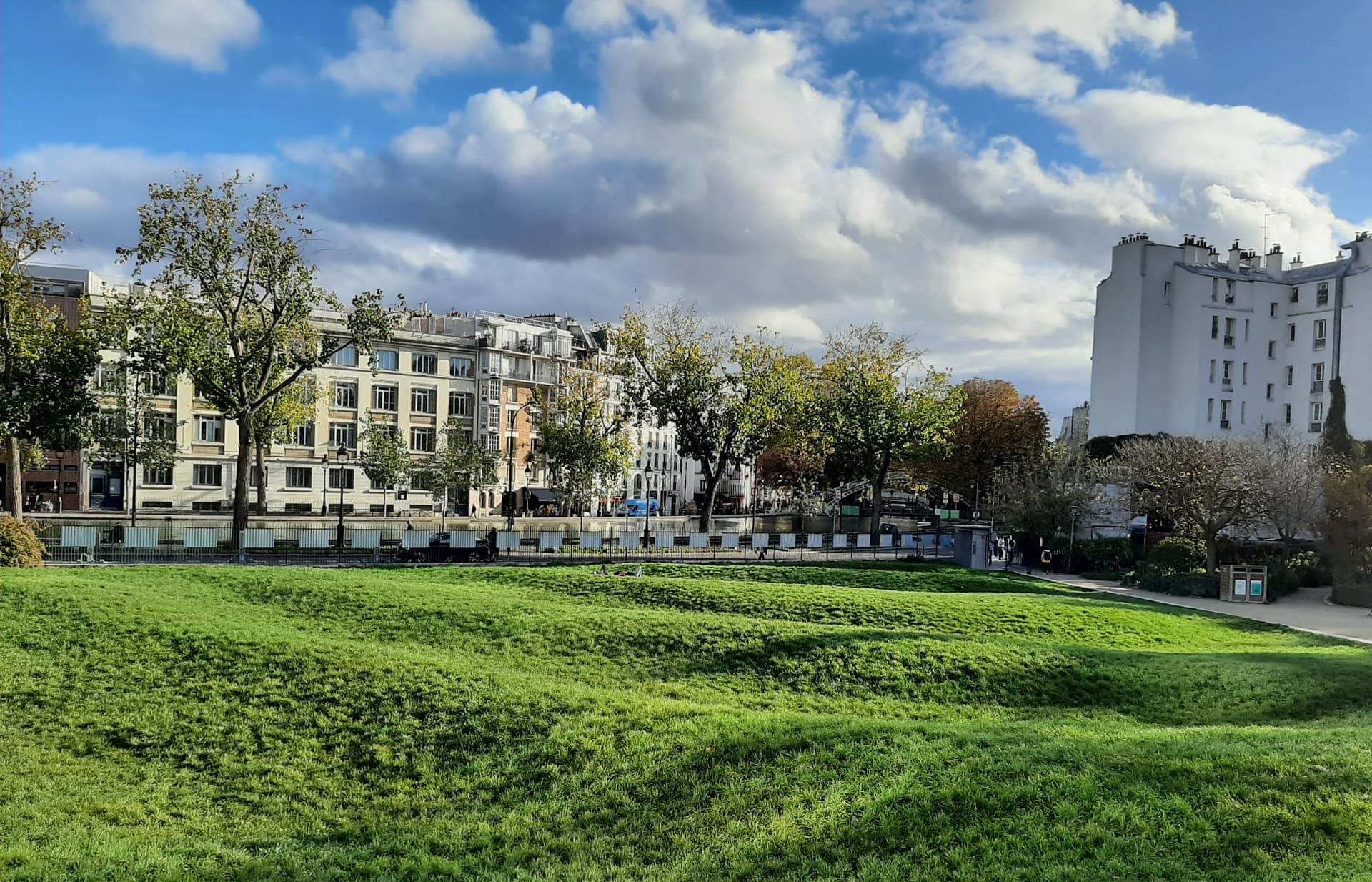Audio GuideVillemin - Mahsa Jîna Amini Garden
Jardin Villemin - Mahsa Jîna Amini
Park with a kids' play area, community vegetable garden, ball-game areas, a bandstand & lawns.
Jardin Villemin – Mahsa Jîna Amini, found in the tenth district of Paris near the lively Gare de l’Est, is more than just a city park. Once the site of the Villemin military hospital, it has transformed over the decades into a place where history and daily life blend.
Walk through the tall gates on Rue des Récollets and you step onto ground shaped by centuries of change. This entrance was originally built for a hospital in the mid-nineteenth century, then a key site for treating soldiers returning from war. The area also hosted the Récollets convent before that, reflecting the layers of Parisian history.
In the nineteen seventies, plans for a highway were set aside, giving space for the park’s birth. Since then, expansions have added sports courts for basketball and handball, a bandstand alive with music, a bowling green, and broad lawns where families stretch out under shade cast by rows of chestnut, plane, and cherry trees.
Near one of the park’s walkways stands a glass memorial stele. It honors Jewish children from the neighborhood lost during World War Two—a gentle yet powerful reminder of the city’s past.
Community spirit is strong here. In two thousand five, Paris’s first shared vegetable garden, Le Poireau Agile, took root. Neighbors tend potato patches and herb beds, sharing both the harvest and ecological know-how.
The most recent chapter started in June twenty twenty-three, when the garden was renamed for Mahsa Jîna Amini. Mahsa was a young Iranian Kurdish woman whose death after police arrest led to global protests for women’s rights and freedom in Iran. Her legacy is a symbol of courage and hope, uniting Parisians and visitors in solidarity.
Today, Jardin Villemin – Mahsa Jîna Amini offers a peaceful escape from the city’s rush. Flowers bloom around the old fountain, children’s laughter fills the playground, and locals gather for cultural gatherings on the lawn. Served by several metro lines, this urban oasis welcomes travelers and Parisians alike—a place where memory, resistance, and joy live side by side.





